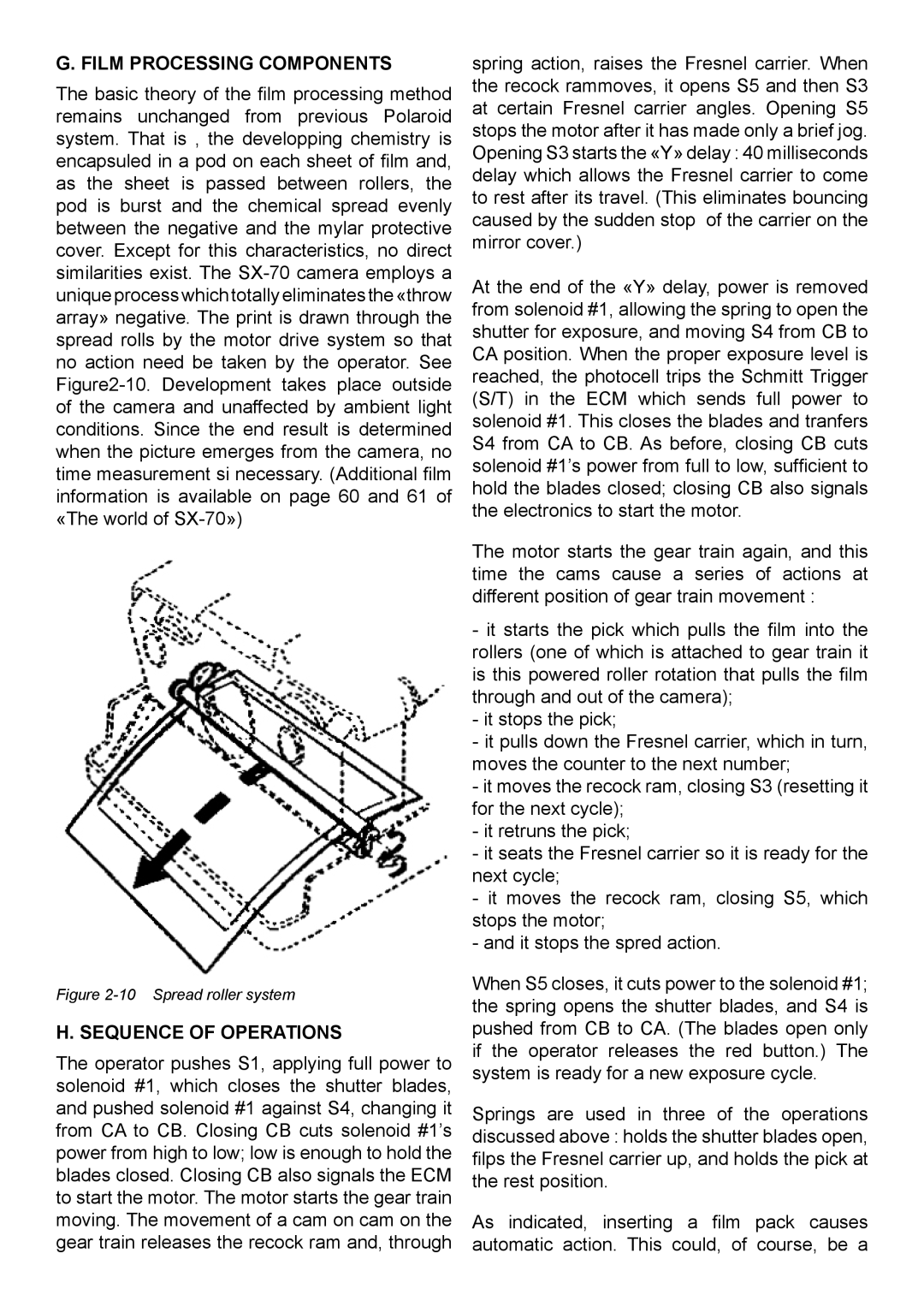
G. FILM PROCESSING COMPONENTS
The basic theory of the film processing method remains unchanged from previous Polaroid system. That is , the developping chemistry is encapsuled in a pod on each sheet of film and, as the sheet is passed between rollers, the pod is burst and the chemical spread evenly between the negative and the mylar protective cover. Except for this characteristics, no direct similarities exist. The
Figure 2-10 Spread roller system
H. SEQUENCE OF OPERATIONS
The operator pushes S1, applying full power to solenoid #1, which closes the shutter blades, and pushed solenoid #1 against S4, changing it from CA to CB. Closing CB cuts solenoid #1’s power from high to low; low is enough to hold the blades closed. Closing CB also signals the ECM to start the motor. The motor starts the gear train moving. The movement of a cam on cam on the gear train releases the recock ram and, through
spring action, raises the Fresnel carrier. When the recock rammoves, it opens S5 and then S3 at certain Fresnel carrier angles. Opening S5 stops the motor after it has made only a brief jog. Opening S3 starts the «Y» delay : 40 milliseconds delay which allows the Fresnel carrier to come to rest after its travel. (This eliminates bouncing caused by the sudden stop of the carrier on the mirror cover.)
At the end of the «Y» delay, power is removed from solenoid #1, allowing the spring to open the shutter for exposure, and moving S4 from CB to CA position. When the proper exposure level is reached, the photocell trips the Schmitt Trigger (S/T) in the ECM which sends full power to solenoid #1. This closes the blades and tranfers S4 from CA to CB. As before, closing CB cuts solenoid #1’s power from full to low, sufficient to hold the blades closed; closing CB also signals the electronics to start the motor.
The motor starts the gear train again, and this time the cams cause a series of actions at different position of gear train movement :
-it starts the pick which pulls the film into the rollers (one of which is attached to gear train it is this powered roller rotation that pulls the film through and out of the camera);
-it stops the pick;
-it pulls down the Fresnel carrier, which in turn, moves the counter to the next number;
-it moves the recock ram, closing S3 (resetting it for the next cycle);
-it retruns the pick;
-it seats the Fresnel carrier so it is ready for the next cycle;
-it moves the recock ram, closing S5, which stops the motor;
-and it stops the spred action.
When S5 closes, it cuts power to the solenoid #1; the spring opens the shutter blades, and S4 is pushed from CB to CA. (The blades open only if the operator releases the red button.) The system is ready for a new exposure cycle.
Springs are used in three of the operations discussed above : holds the shutter blades open, filps the Fresnel carrier up, and holds the pick at the rest position.
As indicated, inserting a film pack causes automatic action. This could, of course, be a
